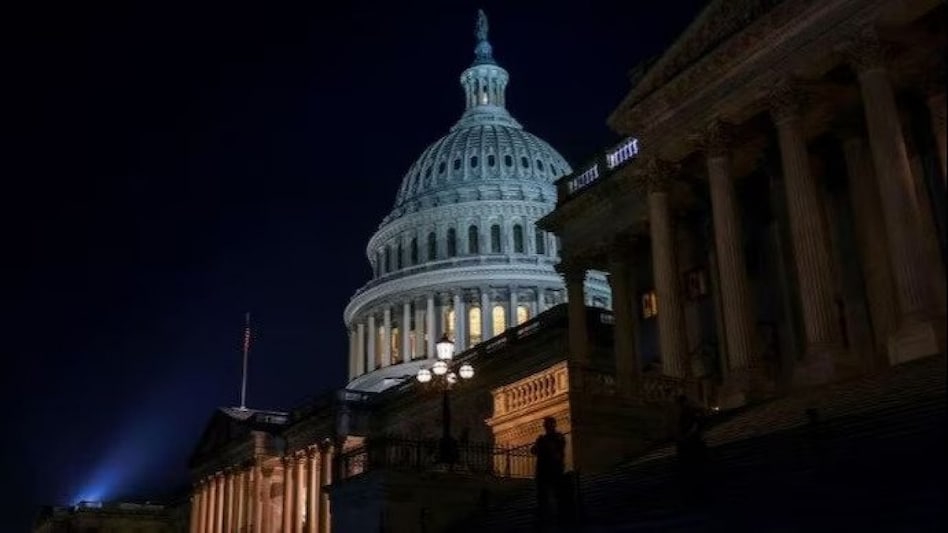 Former President Donald Trump, the leading candidate for the Republican nomination for the 2024 presidential election, has publicly supported a shutdown.
Former President Donald Trump, the leading candidate for the Republican nomination for the 2024 presidential election, has publicly supported a shutdown. 
 Former President Donald Trump, the leading candidate for the Republican nomination for the 2024 presidential election, has publicly supported a shutdown.
Former President Donald Trump, the leading candidate for the Republican nomination for the 2024 presidential election, has publicly supported a shutdown. The US federal government is once again facing a possible shutdown on October 1 if the lawmakers fail to reach an agreement on a spending bill, which would decide the future course of funding for government services. A shutdown happens when Congress fails to pass some type of funding legislation that is signed into law by the president.
If the shutdown is placed at this juncture, federal government services would get disrupted and hundreds of thousands of federal workers furloughed without pay. The Joe Biden-led administration has just seven days to come up with a spending plan that can make it through both chambers of Congress.
A short-term spending bill, known as a continuing resolution, will almost certainly be needed to avert many federal agencies from suspending operations when existing monies expire in a week.
If the shutdown is imposed, workers deemed "essential" would remain on the job but without pay. The US lawmakers have until midnight on September 30 to reach an agreement on a spending bill, before funding for government services is due to dry up.
A shutdown at this point can have multidimensional ripple effects across the US economy, obstructing businesses and consumer confidence amid fears that a recession is in the offing.
Former President Donald Trump, the leading candidate for the Republican nomination for the 2024 presidential election, has publicly supported a shutdown. During Trump's four-year presidency, the government closed three times.
On Saturday, Biden blamed "a small group of extreme Republicans" for a budget impasse that has placed the US government a week away from a shutdown, urging the lawmakers to resolve the issue.
While speaking at a Congressional Black Caucus awards dinner, Biden said he and top House Republican Kevin McCarthy had previously agreed on government spending levels. "Now a small group of extreme Republicans don't want to live up to the deal so now everyone in America could be forced to pay the price," he said as reported by AFP.
What is a shutdown?
A shutdown happens when Congress fails to pass some type of funding legislation that is signed into law by the president. Lawmakers are supposed to pass 12 different spending bills to fund agencies across the government. To avoid shutdown, the lawmakers often resort to passing a temporary extension, continuing resolution or CR, to allow the government to keep operating.
Money for national issues, such as emergency assistance for victims of natural disasters, is often attached to a short-term bill.
How long will the shutdown last
The shutdown will effectively begin at 12.01 am on October 1 if the Congress is not able to pass a funding plan that the president signs into law. Though it is not possible to predict how long a shutdown would last, the US lawmakers will have to devise plan to fund the government. The House and Senate have to agree to fund the government in some way, and the president has to sign the legislation into law.
With Congress divided between a Democratic-controlled Senate and Republican-led House, and Speaker Kevin McCarthy’s hard-right conservatives looking to use the shutdown as leverage for spending cuts, many are bracing for a stoppage that could last weeks.
On Saturday, the US House of Representatives Rules Committee voted, 9-2, to tee up four appropriations bills for debate on the full House floor, the latest move in Republicans' last-ditch bid to prevent government shutdowns after the September 30 deadline.
The committee's action, on a rare Saturday session, sets rules for debating the four bills covering fiscal 2024 funding for the departments of Defense, Agriculture, State and Homeland Security.
It was unclear whether enough Republicans will vote on the House floor for the rules, which must be established before the House can proceed to the funding bills themselves.
Also read: US provided Canada with intel on Hardeep Singh Nijjar's killing in June, says report